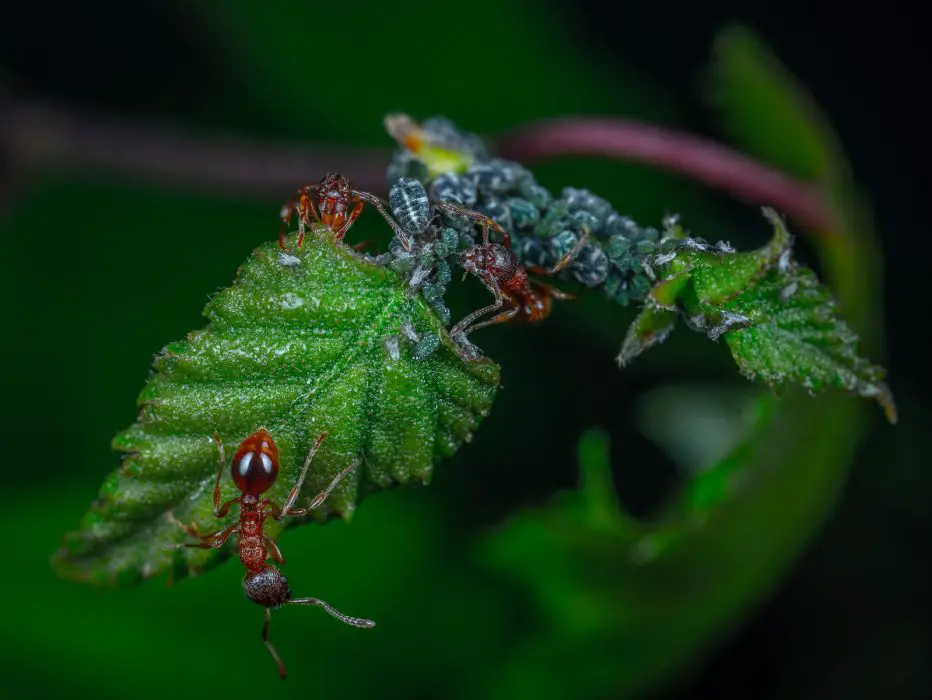In the heart of the Midwest, Indiana stands out for its biodiversity, particularly its fascinating ant population. These tiny creatures, often unnoticed, play a pivotal role in the ecological balance of the Hoosier State. This comprehensive guide delves into Ants in Indiana , examining their ecological significance, unique characteristics, and the ways we interact with them.
From the industrious Carpenter Ant to the invasive Argentine Ant, each species tells a story of adaptation and survival in Indiana’s varied landscapes.
Types of Ants in Indiana
Central Indiana, a region with rich ecological diversity, is home to a variety of ant species. In the United States, there are over 700 ant species, making it a challenge to pinpoint the exact type you might find in your kitchen.
In Indiana, Carpenter Ants disrupt with wood-boring, Thief Ants forage stealthily, Odorous House Ants invade indoors, and Pavement Ants thrive in urban settings, adding to the rich tapestry of ant diversity in Central Indiana.
Lets explore each ant one by one in detail to learn about their roles and impact on the ecosystem.
Odorous House Ants

Odorous House Ants in Indiana are small, dark brown to black ants known for the distinctive odor they emit when crushed. They often invade homes in search of food, particularly sweets and proteins.
- Size & Color: Small, typically 1/16 to 1/8 inch in length, with a dark brown to black color.
- Habitat: Commonly found indoors, especially in kitchens and bathrooms, seeking moisture and food.
- Biodiversity: Play a role in the ecosystem by preying on other insects and contributing to nutrient recycling.
- Complications: Known for the unpleasant odor they release when crushed; can be a nuisance in homes.
- Impact: While they do not pose a significant health threat, their tendency to invade homes in search of food necessitates pest control measures.
Sugar Ants

Sugar Ants in Indiana are small ants attracted to sugary foods, often found in kitchens and pantries. They play a role in seed dispersal and nutrient recycling in the ecosystem.
- Size & Color: Small, typically 1/16 to 1/8 inch, with a light brown to dark brown hue.
- Habitat: Prefer areas with access to sweet substances, often found near food sources in homes.
- Biodiversity: Contribute to the environment by aiding in seed dispersal and nutrient cycling.
- Complications: Attracted to sugary foods, which can lead to them becoming a common nuisance in kitchens and pantries.
- Impact: Generally, not harmful, but their presence in homes can be bothersome, highlighting the need for effective ant management strategies.
Harvester Ants
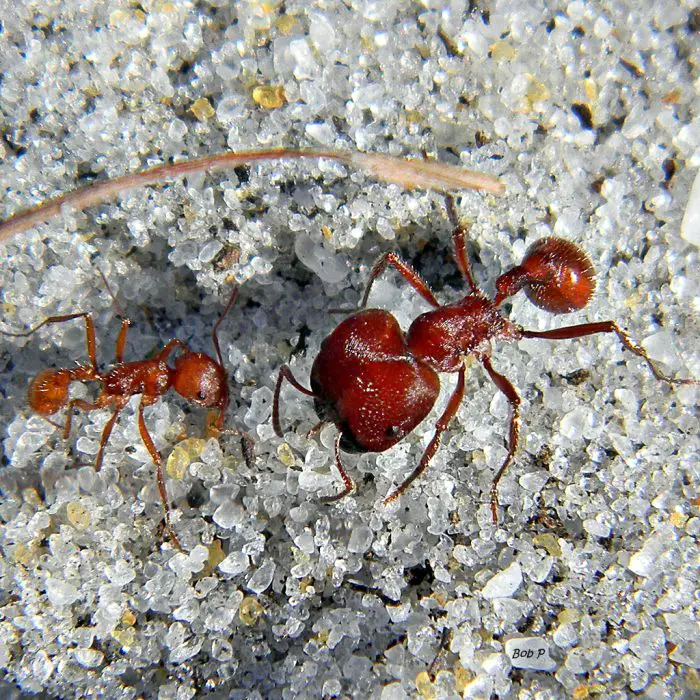
Harvester Ants in Indiana are recognized for their seed collecting and soil aerating activities, contributing to the ecological balance. These ants, varying in shades of red and brown, are usually found in open, sunny areas like meadows.
- Size & Color: Ranging from small to medium-sized, about 1/4 to 1/2 inch, with colors varying from red, brown, to black.
- Habitat: Harvester Ants found in open, sunny areas such as meadows and grasslands.
- Biodiversity: Significant for aerating soil and assisting in seed dispersal, contributing to plant diversity.
- Complications: They coexist peacefully with humans; their mounds can be noticeable in landscapes.
- Impact: Important for the ecological balance, with minimal direct impact on human activities.
Crazy Ants
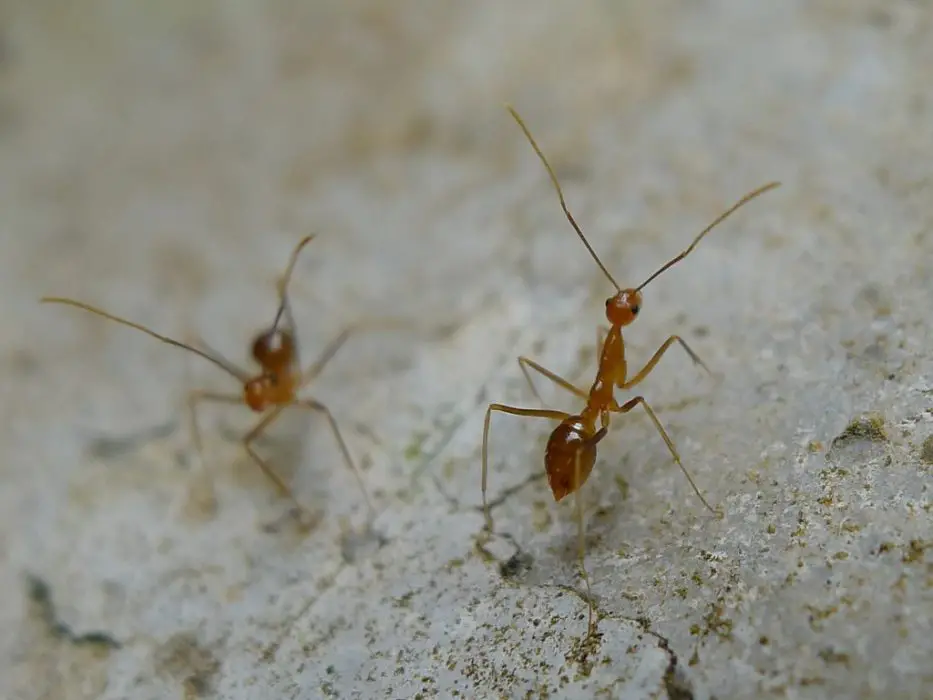
Crazy Ants in Indiana ants are renowned for their unpredictable movements and environmental adaptability. Because of their enormous colony sizes, crazy ants can become a nuisance in homes, posing particular problems for electrical equipment.
- Size & Color: Small, typically 1/8 to 1/4 inch, ranging from light to dark brown.
- Habitat: Versatile, adapting to various environments including both urban and natural settings.
- Biodiversity: Contribute to decomposing organic matter, aiding ecosystem health.
- Complications: Known for their erratic movements and large colony sizes; can infiltrate homes and electrical equipment.
- Impact: Usually not harmful but can be a significant nuisance, particularly when they invade homes and disrupt electrical systems.
Leafcutter Ants in Indiana

Leafcutter Ants in Indiana are remarkable for their ability to cut leaves to cultivate fungus, playing a vital role in nutrient cycling. These relatively large ants create intricate underground nests, influencing plant communities in various ecosystems.
- Size & Color: Relatively large, 1/4 to 1/2 inch, typically reddish-brown to black.
- Habitat: Prefer various ecosystems, from forests to grasslands, known for creating elaborate underground nests.
- Biodiversity: Play a crucial role in nutrient cycling and influence plant communities.
- Complications: Foraging can impact vegetation, occasionally damaging crops.
- Impact: Beneficial for ecological balance but can pose agricultural challenges in some areas.
Pharaoh Ants in Indiana
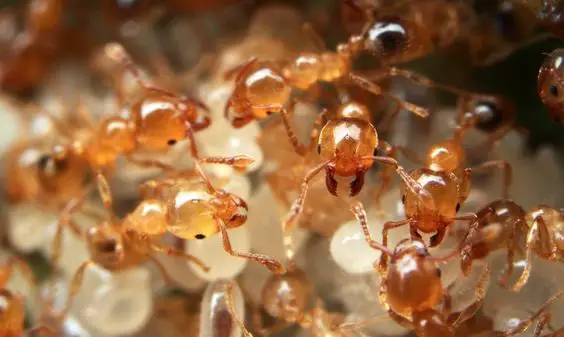
Pharaoh Ants in Indiana are tiny, yellow to light brown ants known for their massive colonies and adaptability to indoor environments. They pose challenges in controlling once established and can disrupt natural ecosystems.
- Size & Color: Very small, about 1/16 to 1/12 inch, typically yellow to light brown.
- Habitat: Highly adaptable, often establishing nests in warm, indoor environments.
- Biodiversity: Can disrupt natural ecosystems; known for forming large colonies.
- Complications: Challenging to control once they establish themselves indoors; can pose health risks.
- Impact: A significant concern for homeowners, especially when they invade kitchens and pantries in search of food.
Carpenter Ants in Indiana
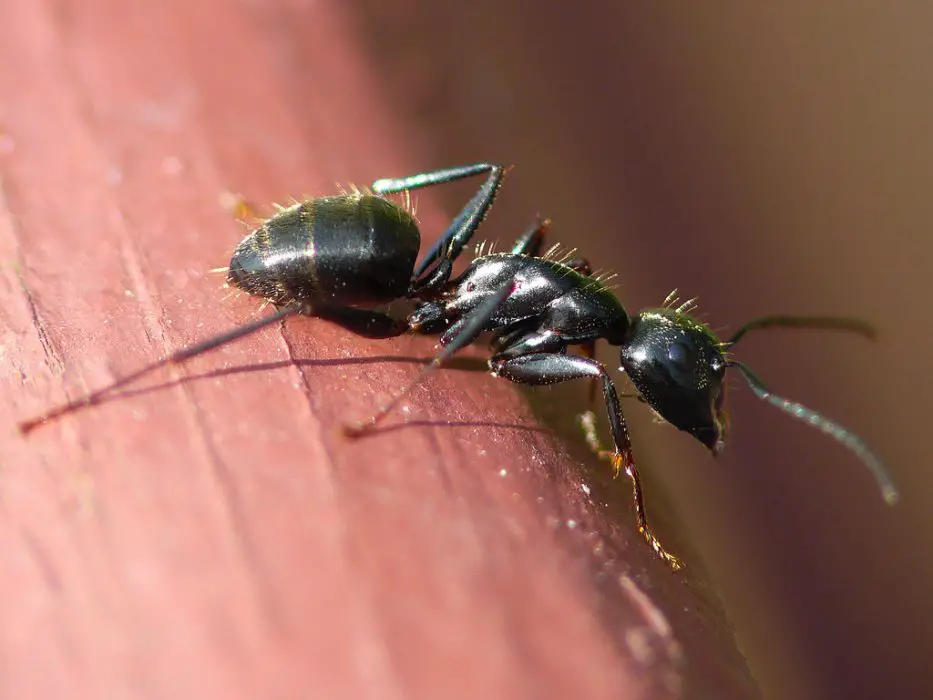
Carpenter Ants are well-known for their wood-boring behaviors in Indiana, frequently resulting in structural damage to homes and other structures. Through the breakdown of wood, carpenter ants contribute significantly to the ecosystem; however, when they infiltrate buildings built by humans, pest control measures become necessary.
- Size & Color: Varied sizes, typically black or dark brown.
- Habitat: Prefer nesting within wood, including trees and structures.
- Biodiversity: Play a key role in ecosystem health through wood decomposition.
- Complications: Their wood-boring behavior can cause property damage.
- Impact: Ecologically significant, but their nesting habits in human-made structures necessitate pest control measures.
Fire Ants in Indiana
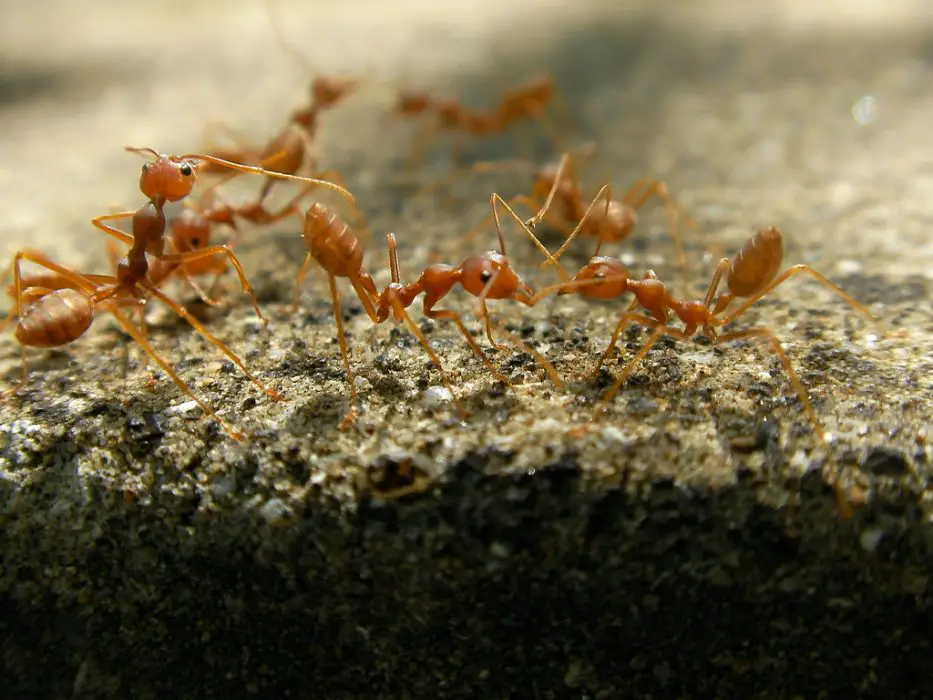
Fire Ants in Indiana are small, , reddish-brown ants are notorious for their painful stings and aggressive behavior in Indiana. Although they help aerate the soil and suppress pests, fire ants can also be harmful to humans and native insect populations.
- Size & Color: Generally small, around 1/8 to 1/4 inch, with a reddish-brown to reddish-black coloration.
- Habitat: Known for constructing mound nests in open areas like lawns and parks.
- Biodiversity: Contribute to soil aeration and pest control, though they can disrupt native insect and wildlife diversity.
- Complications: Their stings can pose health risks; known for forming colonies with queens and worker ants.
- Impact: Beneficial to the ecosystem but can be a nuisance when they invade homes, often requiring pest control.
Pavement Ants
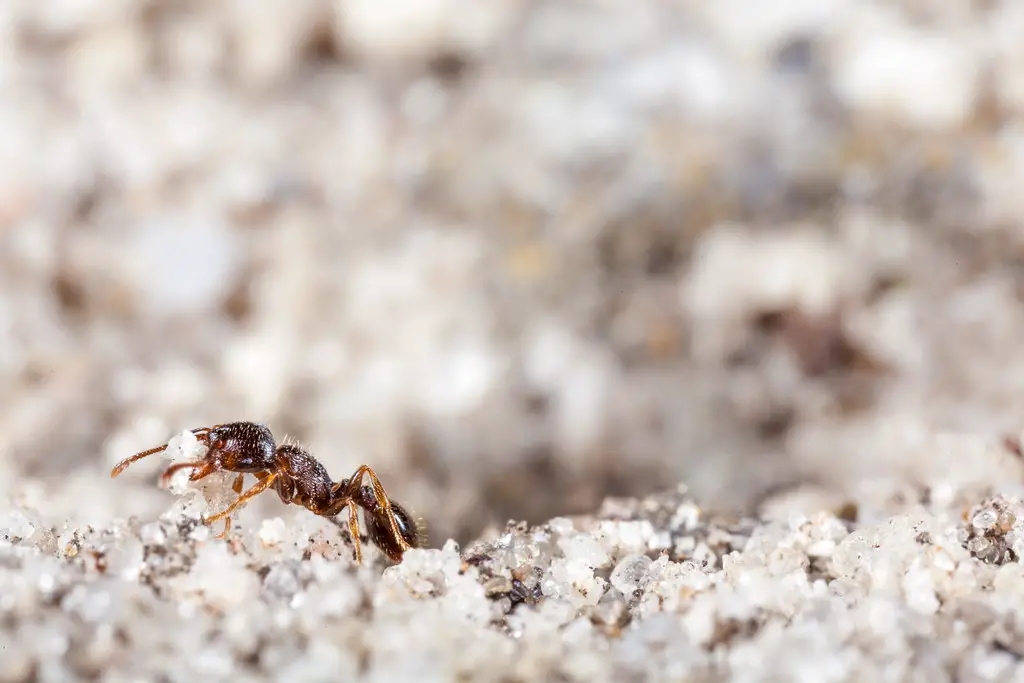
Pavement Ants in Indiana, commonly found in urban areas, nest in cracks of sidewalks and building foundations. These small, reddish-brown ants often invade homes in search of food, becoming a frequent nuisance in kitchens and pantries.
- Size & Color: Typically small, about 1/8 inch, with a reddish-brown to dark brown coloring.
- Habitat: Thrive in urban environments, often nesting in sidewalk cracks and building crevices.
- Biodiversity: Can impact local ecosystems by potentially displacing native ant species.
- Complications: Known for foraging for food in homes, occasionally leading to invasions of kitchens.
- Impact: Common urban pests, requiring management to maintain cleanliness and minimize infestations.
Argentine Ants in Indiana
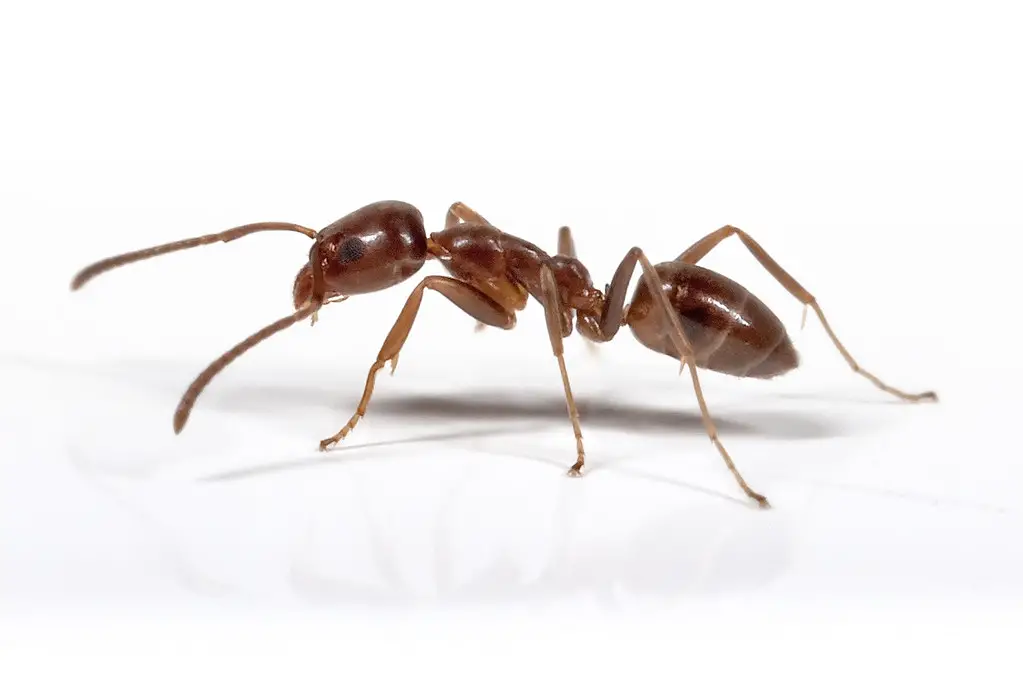
Argentine Ants in Indiana are known for their adaptability and large colonies, often nesting in moist or dark spaces. These light to dark brown ants, small in size, disrupt local ecosystems by outcompeting native species and can be a significant nuisance in homes.
- Size & Color: Small, usually measuring 1/16 to 1/8 inch, typically light to dark brown.
- Habitat: Adapt well to various environments, often nesting in moist or dark spaces.
- Biodiversity: Known to disrupt local ecosystems by outcompeting native ant species.
- Complications: Their massive colonies with multiple queens make them challenging to control.
- Impact: Can be a nuisance in homes, affecting the balance of local ecosystems and often requiring pest control.
Ecological Role of Ants in Indiana
In Indiana, ants play a multifaceted role in maintaining ecological balance. They are integral to soil aeration, a process vital for plant growth and health. By tunneling through the earth, ants enhance soil fertility and facilitate water and nutrient penetration. Their activity in seed dispersion is equally crucial. By transporting seeds, ants aid in the propagation of numerous plant species, contributing to the state’s rich biodiversity. Moreover, ants are a key component of the food chain, serving as prey for various animals while also controlling other pest populations through their predatory behaviors.
Ants also engage in symbiotic relationships with other organisms. Some species protect plants from herbivores in exchange for nectar or shelter, showcasing a mutualistic interaction beneficial to both parties. These complex interactions highlight the significance of ants in maintaining the delicate balance of Indiana’s ecosystems, underlining their role beyond mere pest status.
Human-Ant Interactions
Ants in Indiana influence human lives in various ways. On the positive side, they contribute to pest control by preying on crop-damaging insects, thereby supporting agriculture and gardening. However, this interaction can turn negative when ants become pests themselves. Species like Carpenter and Pavement Ants can invade homes, causing structural damage and hygiene concerns. In gardens, their mound-building activities can disrupt plant growth.
The human-ant relationship is thus a balancing act. While we benefit from their ecological roles, the challenges they pose in domestic environments cannot be overlooked. This dynamic underscore the need for informed management strategies that address the complications of ant infestations while recognizing their environmental contributions.
Ant Bite Treatment and Prevention
To treat ant bites in Indiana, first, clean the area with soap and water. Apply a cold compress to reduce swelling and itching. Over-the-counter antihistamines or hydrocortisone cream can alleviate discomfort. If allergic reactions or severe symptoms occur, seek medical attention immediately.
Preventing ant bites involves avoiding known ant habitats, wearing protective clothing when outdoors, and keeping living spaces clean to deter indoor ant infestations. Regularly inspecting and sealing potential entry points in homes can also reduce the likelihood of encounters with ants.
Managing Ant Infestations in Indiana
Managing ant infestations in Indiana begins with identifying the ant species, as different types require specific treatment approaches. Natural remedies include using vinegar, lemon juice, or essential oils as deterrents. Food sources should be secured, and crumbs or spills cleaned promptly to avoid attracting ants.
For persistent infestations, commercial ant baits and insecticides can be effective. These products should be used as directed to ensure safety and effectiveness. Sealing entry points in walls, windows, and doors can prevent ants from entering homes.
In cases of large or difficult-to-control infestations, professional pest control services may be necessary. Experts can provide targeted treatment and advice on long-term prevention strategies, ensuring a comprehensive approach to managing ant populations in residential and commercial settings.
Conservation and Coexistence
Conserving ant species and their habitats is vital for maintaining ecological balance in Indiana. While managing pest populations, it’s important to recognize the ecological roles ants play and strive for coexistence. Efforts include preserving natural habitats, supporting biodiversity, and using environmentally friendly pest control methods.
Initiatives in Indiana focus on protecting native ant species and controlling invasive ones, balancing human needs with ecological preservation. Educating the public about the ecological importance of ants and promoting sustainable practices are key to achieving this balance, ensuring a harmonious coexistence and a thriving biodiversity in the Hoosier State.
Conclusion
Understanding and respecting the role of ants is essential for maintaining Indiana’s rich ecosystems. By balancing effective ant management in human environments with conservation efforts, we can support a thriving biodiversity. This approach underscores the importance of coexistence, ensuring both ecological health and human well-being.

